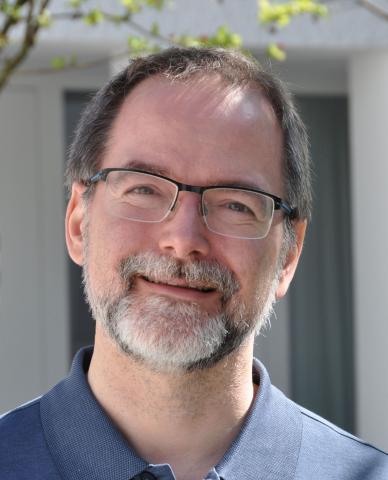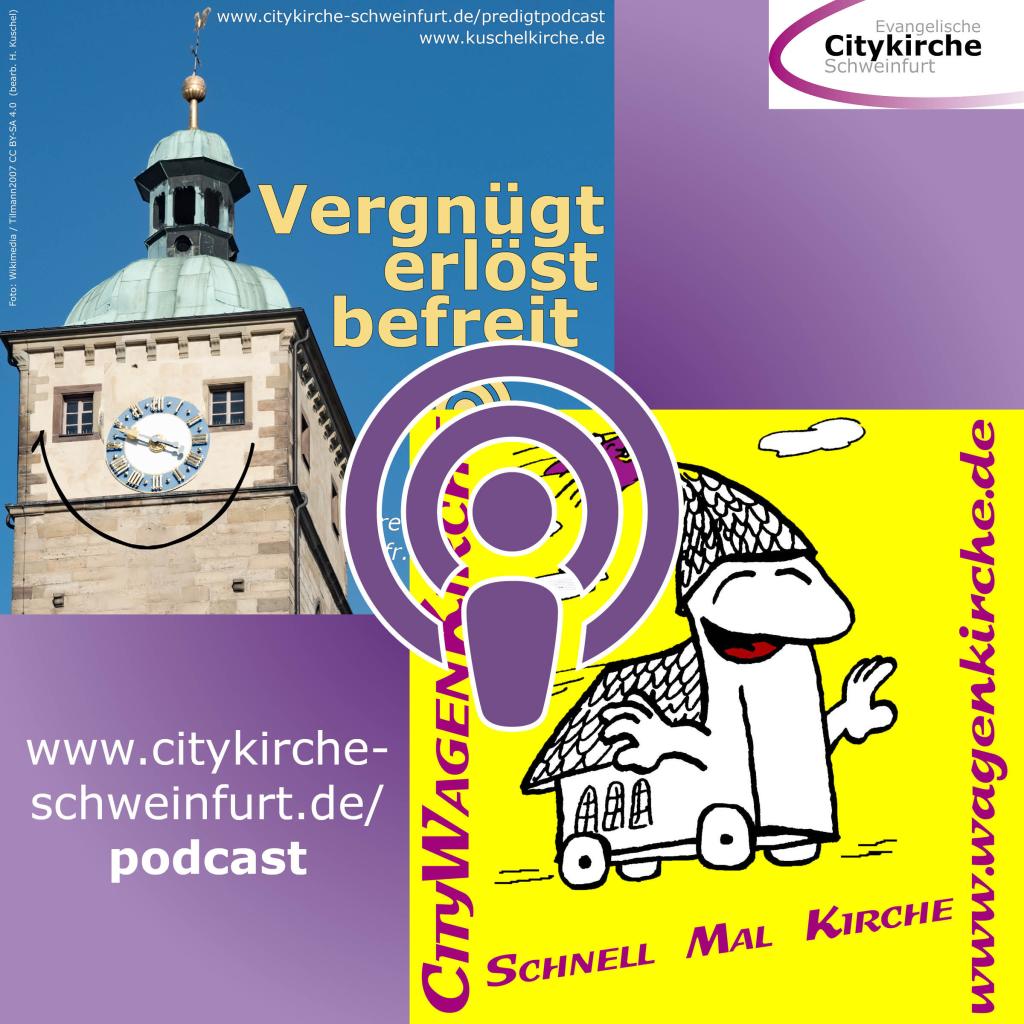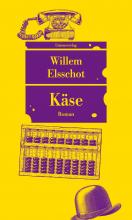Social mobility in a rural area along a railway or fast bus lane

1 Introductory notes:
This is my final assignment for the MOOC „Alternative Mobility Narratives“ https://coursera.org/share/84ad62b06a77d2b40b9f47fe139b2bf0 by the Urban Cycling Institute of the University of Amsterdam.
Although this course mainly aims towards urban mobility, I tried to adapt it for the more rural area where I live. The different aspects of mobility that were discussed in the course seem to partly contradict each other at a first glance, but I think that they can be brought together quite well.
You can download the whole text as odt and pdf below.
2 The situation
I live in a more rural area near Schweinfurt, a town with approx. 55.000 inhabitants and lots of car industry (ZF and others). The main question here is: How to change the modal split of people travelling into the city from cars to bus, train and bike?
The county (Landkreis) has already presented a new concept for public traffic that will rely on 11 fast (bi-)hourly bus lines from the year 2024 on, heading from all directions towards Schweinfurt. Villages that are not connected directly will be served by short shuttle lines to the main bus lines. One of these main bus lines – the one that connects my home village Gochsheim – could be replaced by reactivating the 50 km long “Steigerwaldbahn” railway that was abandoned about 30 years ago.
The local reigning conservative CSU party wants to remove the rails and replace them by a test drive for a small electrical bus that will be completely autonomous in the end, the E.go people mover01 that is developed by ZF, although not in Schweinfurt, but some parts of it are produced here, so it has a local aspect. They also want to add a fast bike lane. This is probably technically impossible as the way is not wide enough for all this.02 03
3 Mobility as disutility
The narrative of mobility as disutility04 will still be prevalent for quite some time, so to be successful and competitive with the car, it is important to provide public transport that is relatively fast, cheap, comfortable and reliable. This is totally clear in the way the Bavarian state looks at the reactivation potential of closed down railways. A research paper has to forecast more than 1000 traveller-km per km. The only criteria are costs and the number of people transported. „Mobility underwent abstraction as it was lifted off into a rational movemebt equation. Simple variables and inputs were plugged into formulae that could be repeated over and over again“05 Social aspects and the positive impact on the rural area aren’t considered at all.06
Instead of replacing the Steigerwaldbahn by a small and slow bus for the long ride, this system could better be used as a flexible connection between the rail or bus stations and the villages. By picking up the CSU idea and just altering it, this could increase the overall political acceptance of the whole mobility system.
Ordering an autonomous bus should be made as easy as possible, especially for elderly people. So additionally to phone and app I propose a special order button at home, just like the Amazon dash button. Just press the button and it tells you „next bus will arrive at 13:24 for you.“ All this together could add to the self description of the CSU party as „innovative and technology-addict while well connected to the rural area“ (or: „Laptop und Lederhosen“), so they might be able to support the little twist in their concept.
4 Mobility as unnecessity
This question was a game changer for me: Is mobility necessary at all07? What if people living in the villages didn’t have to go into town for most of their errands? Many villages lack most of the infrastructure that is needed. But there are possible solutions: Small automatic shops specially designed for small villages can supply food and the daily needs.08 This would be a complete change in the mobility habitus09 „when the out-of-town shopping centre competes, and in time replaces, the local corner shop (...), all people become increasingly car dependent.“10
Rural coworking spaces could become cristallisation points of a new village life where people meet.11 The autonomous buses could not only bring people to the train/bus stations, but also from the smallest villages to the village centers nearby. All this together would bring people together and strengthen village life, decreasing on the same time the need for traveling into the city.
Link to loopy - click here or see below.
5 Commoning mobility
Nikolaeva et al. propose a new mode of thinking about mobility. Instead of seeing mobility as disutility and, in a neoliberal way of thinking, addressing the problems in the logics of scarcity and austerity, they introduce the logic of mobility as something common.12 Despite the prevalent narratives of village life as a community, from my empirical knowledge it might be very hard to change the mobility habitus of village inhabitants. Since public transportation has been very scarce and unreliable for decades, the predominant form of mobility is riding alone in a car. Some colleagues might establish a car pool for going to work together, but that’s all. Even the „Mitfahrbank“ in many small villages, a bench on the street where you can sit down, indicate your destination with a sign and wait for a car to pick you up, was no big success.
For me, the logic of commoning is the link to any new form of mobility in the rural area. The village centres I propose are a starting point for all kinds of activities, whether people stay there or start their journey there. A journey sharing app and – especially for elder people – some form of bulletin board for sharing destinations could be a starting point. All modes of mobility can be included, not only by car, but also riding on bikes together or using the autonomous mini bus – or a car sharing service that is also installed here.
A crucial point for the community is that all activities start and end at the village centre, so people meet there occasionally and learn to know each other better. In Germany, this could be accomplished in a very typical German way. Just announce that all rides using the sharing app system are insured in case of accidents, but only from the meeting point at the village centre to the destination.
6 Mobility as play and interaction
For me, mobility as play13 and interaction14 belong together with commoning mobility.
The best thing to do in a setting of mobility as a play would be to set up some kind of bonus point system for people who take the bike or the mini bus to the next station instead of using the car. An app like Ring Ring Amsterdam15 could be the right tool for that. Bonus points could be used for discounts on the local small grocery store or for tickets for the bus/railway or any other stores in the surrounding area. This could be a real competition on who has the most bonus points in a month. There’s a challenge to reach e.g. the “top five” and to have a real benefit with the bonus points. From time to time, there should be special “action days” that focus on biking and the usage of the app, so people are made aware of the system.
There’s already an interactive element in the Ring Ring system itself, since groups or companies can establish goals to achieve. So, people can find together in groups and interact for a goal that is even beside mobility itself. Maybe the app could be enhanced in a way that teams can get more bonus points if they work together.
Interaction between people can also be encouraged by building cycling ways wide enough for cyclists to ride beside each other. In the small buses, there could be some communicative elements that encourage interaction between the passengers – although you should keep in mind that many commuters need their time for relaxation and being on their own.16
A central part for interaction in my concept are the community centres. People with very different goals will meet there by chance and will fill the place with life. They will be exposed to diversity17 here and strengthen the feeling of belonging together in a village. They just need to have such a multi-purpose meeting space. I think it doesn’t need much more than that.
7 Final "loopy"
8 What else?
Most steps I proposed have to be achieved on a political level. I will try to introduce them into the political discusssion in our region.
What I am missing is a more differentiated view on the situation of people living in the villages. For me, mobility has not only technical and environmental aspects, but also a social dimension. What about families: What could help them to change from a car (very convenient!) to bike or bus or at least car sharing? What about elderly people who are afraid of using an app: How can they be integrated in a community with a diverse mobility system? What about children: How can it be made easy and safe for them to participate in mobility on their own? How can handicapped people be integrated in the system? These questions are crucial for building living village centres and a new form of mobility.
Heiko Kuschel
02Witte A: Autonomes Fahren auf der Steigerwaldbahntrasse – sinnvoll? Eine Ausarbeitung über die Potenziale von autonomen Straßenfahrzeugen auf dem Bahnkörper der Steigerwaldbahn, 2019. Download: https://fv-steigerwald-express.de/reaktivierung/gutachten/
03It is possible that the whole proposal of the bus system is only a diversion from the fact that they only want to get rid of the railway and use the land otherwise. See eg. https://www.mainpost.de/regional/kitzingen/leserforum-autonome-busse-als-luftnummer-art-10596571
04Te Brömmelstroet, Mobility language matters. Free download https://decorrespondent.fetchapp.com/get/efba54b1
05Cresswell, T (2006) On the move: Mobility in the modern western world, New Your: Routledge, p. 46, as cited in Te Brömmelstroet
06There are three official studies. Dr. Konrad Schliephake from the University of Würzburg (financed privately by a pro-railway movement) as well as the Kobra study (financed by the county, but based on Schliephake) concluded that the 1000 passengers criteria would be exceeded (download here https://fv-steigerwald-express.de/reaktivierung/gutachten/). The official Bavarian study is only available in a short version without the data base and conclusions, so there are doubts that this is scientifically tenable. It concludes with only 563. Download here: https://beg.bahnland-bayern.de/de/pressemitteilungen/beg-legt-gutachten-zum-fahrgastpotenzial-f%C3%BCr-die-untere-steigerwaldbahn-vor )
07Te Brömmelstroet, Mobility language matters
09Bordieu as cited in Te Brömmelstroet
10Te Brömmelstroet, Mobility language matters
11See https://7fridays.de/2021/03/17/voices-kremkau-denkt-coworking/ or the podcast „She drives mobility“ #56
12Nikolaeva A, Adey P, Cresswell T, Lee JY, Nóvoa A, Temenos C. Commoning mobility:Towards a new politics of mobility transitions.Trans Inst Br Geogr. 2019;44:346–360. https://doi.org/10.1111/tran.12287
13Marco Te Brömmelstroet, Anna Nikolaeva, Catarina Cadima, Ersilia Verlinghieri, Antonio Ferreira, Milos Mladenović, Dimitris Milakis, Joao de Abreu e Silva & Enrica Papa (2021): HAVE A GOOD TRIP! EXPANDING OUR CONCEPTS OF THE QUALITY OF EVERYDAY TRAVELLING WITH FLOW THEORY, Applied Mobilities, DOI: 10.1080/23800127.2021.1912947 https://doi.org/10.1080/23800127.2021.1912947
14te Brömmelstroet, M., Nikolaeva, A., Glaser, M., Nicolaisen, M. S., & Chan, C. (2017). Travelling together alone and alone together: mobility and potential exposure to diversity. Applied Mobilities, 2(1), 1–15. https://doi.org/10.1080/23800127.2017.1283122
15Nikolaeva A, Adey P, Cresswell T, Lee JY, Nóvoa A, Temenos C. Commoning mobility:Towards a new politics of mobility transitions.Trans Inst Br Geogr. 2019;44:346–360. https://doi.org/10.1111/tran.12287
16see the film “A way we go. Transport stories from around the world”: the first three parts “the library, the temple, the music” https://vimeo.com/405323910
17te Brömmelstroet, M., Nikolaeva, A., Glaser, M., Nicolaisen, M. S., & Chan, C. (2017). Travelling together alone and alone together: mobility and potential exposure to diversity. Applied Mobilities, 2(1), 1–15. https://doi.org/10.1080/23800127.2017.1283122
Dateianhang
| Anhang | Größe |
|---|---|
| social_mobility.pdf | 93.58 KB |









